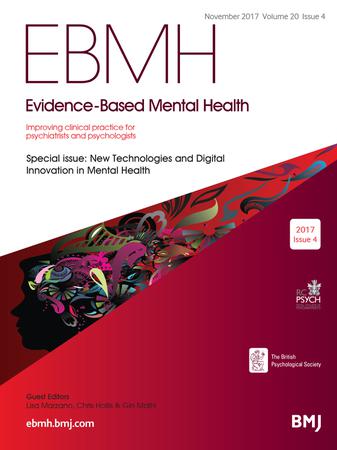评论:“维特鲁威图:网络荟萃分析中多种结果的可视化工具”。
IF 11.4
2区 医学
Q1 PSYCHIATRY
Evidence Based Mental Health
Pub Date : 2022-11-01
Epub Date: 2022-08-25
DOI:10.1136/ebmental-2022-300547
引用次数: 0
摘要
本文章由计算机程序翻译,如有差异,请以英文原文为准。
Comment on: 'Vitruvian plot: a visualisation tool for multiple outcomes in network meta-analysis'.
求助全文
通过发布文献求助,成功后即可免费获取论文全文。
去求助
来源期刊

Evidence Based Mental Health
PSYCHIATRY-
CiteScore
18.10
自引率
7.70%
发文量
31
期刊介绍:
Evidence-Based Mental Health alerts clinicians to important advances in treatment, diagnosis, aetiology, prognosis, continuing education, economic evaluation and qualitative research in mental health. Published by the British Psychological Society, the Royal College of Psychiatrists and the BMJ Publishing Group the journal surveys a wide range of international medical journals applying strict criteria for the quality and validity of research. Clinicians assess the relevance of the best studies and the key details of these essential studies are presented in a succinct, informative abstract with an expert commentary on its clinical application.Evidence-Based Mental Health is a multidisciplinary, quarterly publication.
 求助内容:
求助内容: 应助结果提醒方式:
应助结果提醒方式:


